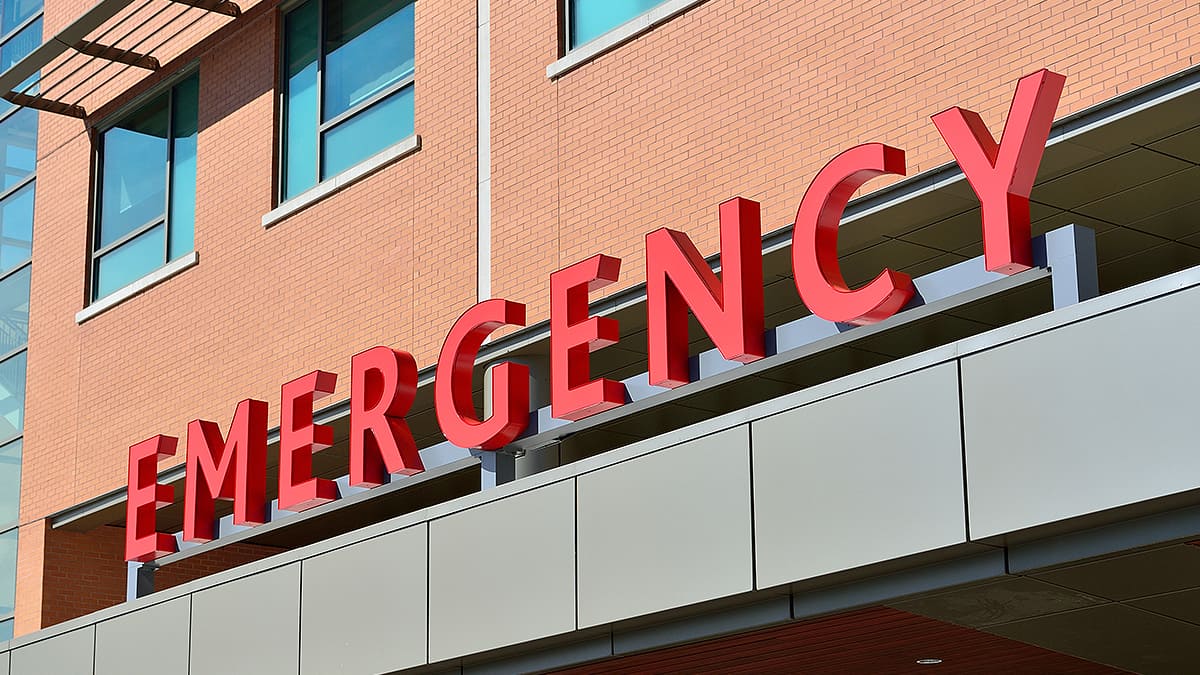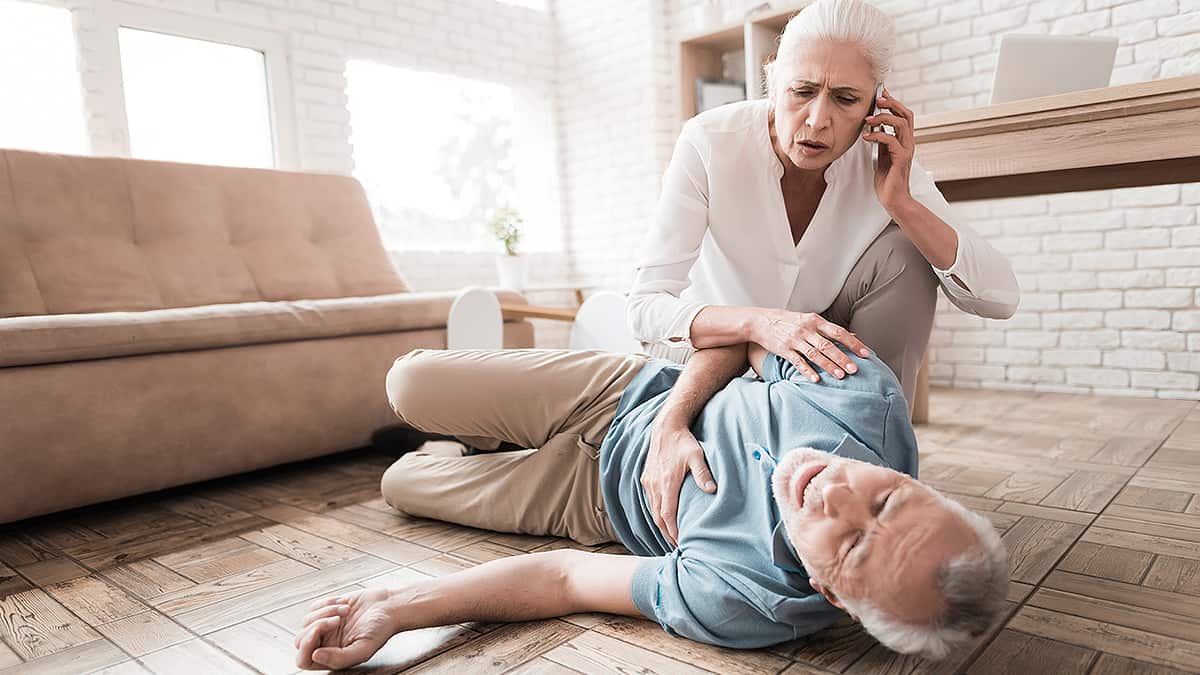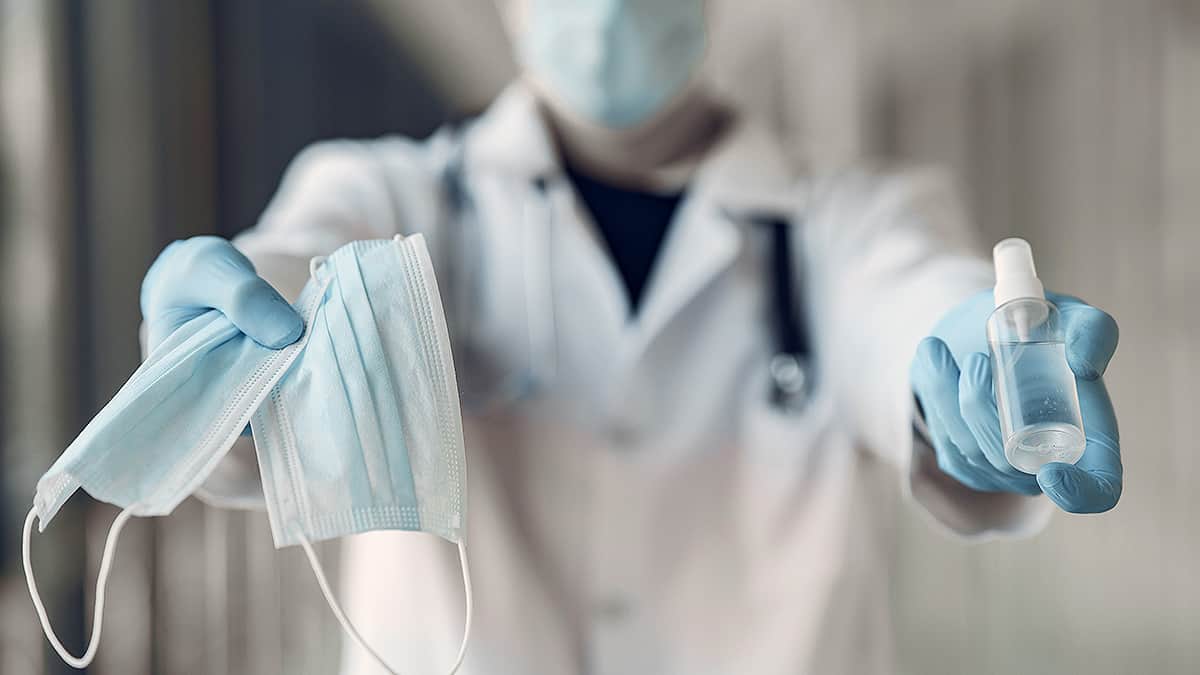Avoiding the Doctor Due to the Pandemic: The Serious Implications and How You Can Safely Get Medical Care
COVID-19

Many people are trying to be responsible during the COVID-19 pandemic by limiting their interactions with other people and by not going out in public spaces as often. However, one result of these precautions is that some people have been avoiding going to the doctor or getting medical care. This can lead to serious consequences for those who are experiencing other health problems. Thankfully, there are several alternatives to in-person healthcare visits, and ways to reduce your risk of infection for those times when you do have to go in to the hospital or doctor's office.
Have People Been Avoiding the Doctor?

In May 2020, almost 50% of Americans said that they or someone in their household had put off medical care due to the pandemic. This number decreased to 42% in a September survey. People are starting to feel more comfortable going in to the doctor's office, but are still seeking less health care than they did a year ago.
The same trends have been seen when it comes to urgent hospital visits. 42% fewer people went in to the emergency room in April 2020 compared with April 2019. Some groups of people were especially unlikely to get emergency care, including children, women, and people who lived in the Northeast part of the United States. A later report showed that at the beginning of August there were 10% fewer people going in to the emergency room, so these numbers seem to be improving.
Why Are People Getting Less Medical Care?
It's possible that people may need slightly less medical attention than they did in past years. With more people working from home and fewer people going out socially during COVID-19, the number of traffic accidents has decreased, according to a study in California. Additionally, some people may be eating out less and cooking healthier meals at home, leading to fewer problems with heart attacks or heart disease.
Even when people need medical help, they may not be able to get it due to factors beyond their control. COVID-19 led many healthcare providers to cancel procedures, shut down medical offices, and see fewer patients. Some patients may have wanted to see a doctor but couldn't visit their usual providers.
Additionally, many people lost their jobs, were laid off, or took pay cuts during the pandemic. These factors have caused some Americans to lose their health insurance or to have a hard time continuing to pay for medical care. For example, in a recent survey, 87% of cancer patients and survivors said that COVID-19 had impacted their ability to access healthcare. Many put off getting tests or receiving treatment, and nearly half said that the pandemic had affected their ability to pay for treatment.
However, research is showing that people are also actively avoiding getting medical attention when they need it. By now, we all know that social distancing and isolating from other people are important public health measures that can reduce the spread of the coronavirus. Many people may be especially worried about coming into contact with other potentially contagious people in a doctor's office or in a hospital.
The Serious Health Consequences of Avoiding the Doctor
When people avoid getting medical care, there may be long-term consequences. Between March and July, nearly a quarter million more people died than expected in the United States. Two-thirds of these deaths were due to COVID-19, but the other one-third was due to causes like heart attack. This means that many more people were dying from other health conditions than normal.
Experts worry that once COVID-19 hit, people experiencing symptoms of serious health problems didn't call for help because they were worried about infection. Within the first ten weeks of the pandemic:
- There were 23% fewer emergency room visits for heart attack
- People went to the emergency room 20% less often for stroke
- There were 10% less room visits for emergencies related to diabetes
Not receiving help during a medical emergency can be dangerous. People who have a heart attack are more likely to survive and have less heart damage if they get medical attention right away. The same can be said for a stroke. Strokes cause brain damage, and the faster a person gets help, the more this damage can be halted. While most people might realize this, a prevailing feeling of fear toward the coronavirus has reduced the number of patients seeking care when they need it most.
Getting regular checkups is also important for preventing more serious disease. One study recently reported that fewer people were getting screened for cancer since the start of the pandemic. For example, breast cancer screenings decreased by 90%. These screenings are important because they help reduce negative long-term health impacts. Treatments work better and people are likely to live longer when cancer is caught early. If people delay screenings during COVID-19, they may not realize they have cancer until the disease has already progressed and spread throughout the body.
Many doctors are very concerned about these trends. Organizations such as the American Heart Association have even created advertising campaigns encouraging people to continue getting care, especially for more urgent health concerns. Medical experts agree that it's still important for people to see their doctor during this pandemic.
Weighing the Risks vs. Benefits for Getting Medical Treatment

So, should you avoid going to the doctor, to reduce your risk of exposure to the virus? Or should you continue seeing your healthcare providers like usual, to reduce the risk of other health problems? The risks and benefits of getting medical care should be thoughtfully considered.
Certain people are at high risk for having severe symptoms if they contract COVID-19. They may want to take extra precautions to avoid coming into contact with others, including potentially avoiding in-person doctor's visits. High-risk groups include people with:
- Cancer
- Heart conditions such as heart failure
- Lung diseases such as asthma or COPD
- Weakened immune systems
- Obesity
- Type 2 Diabetes
On the other hand, people in these groups may also need regular medical care. Obtaining proper treatment can reduce the risk of serious health complications and even death for people who have chronic health problems.
Certain types of check-ups or treatments can more easily be delayed than others. There are also ways people can still receive medical treatment while reducing their risk. Work with your healthcare provider to decide which options are best for your health.
Alternatives to In-Person Medical Care

Delaying Treatment
Some routine or preventative healthcare visits may be able to be delayed. If you aren't currently experiencing any symptoms and don't have any major health concerns, ask your doctor if your visit can be put off for a few months, until COVID-19 case numbers decrease in your area. Certain procedures, such as routine blood work, X-rays, or MRIs, might be able to wait for people who are concerned about being exposed to COVID-19. Talk to your doctor about the risks and benefits of delaying healthcare visits based on your particular needs.
Check-ups for chronic health conditions may not be able to be delayed, especially for children. In-person visits are also very important for newborns and infants up to the age of two, and keeping up to date on vaccines is essential. Talk to your pediatrician before changing or delaying care plans for children.
Telemedicine
Thankfully, you don't always need to see someone in-person to receive healthcare. People who continue to need medical care during this time can take advantage of telemedicine options, as these work great for many medical conditions.
Telemedicine, also known as telehealth, refers to a wide array of healthcare services that can be accessed virtually. Telehealth makes use of tools like phone calls, online video calls, smartphone apps, or text messages. Virtual visits can be used for a wide variety of health services, such as:
- Acute urgent care for conditions that are not life-threatening
- Monitoring chronic health conditions
- Mental health services
- Health coaching and counseling
- Physical or occupational therapy
- Follow-up appointments after hospitalization, surgery, or changes in medication
Since COVID-19 began, many more providers have been offering telehealth services. Technology in this area has been rapidly improving, making it easier for providers and patients to connect. Additionally, increasing numbers of health insurance companies are expanding their coverage for virtual or remote care.
Prescriptions can often be handled entirely over the phone. Physicians may be able to prescribe new medicines virtually and follow up with patients to see how new drugs or dosages are working out. Additionally, using an online pharmacy can help you avoid having to pick up medications in person.
How to Access In-Person Care Safely During the COVID-19 Pandemic

How Risky is In-Person Care?
In general, your risk of getting COVID-19 increases when the people around you aren't following basic precautions. However, the vast majority of doctor's offices and hospitals have adopted new procedures to help keep patients safe. For example, many healthcare offices screen patients before they enter the building by taking their temperature or by asking them questions about whether they have recently experienced COVID-19 symptoms. Your doctor may also have a separate waiting room for people who are visiting due to possible viral infections or may see possible COVID cases at specific times throughout the day.
Your risk of getting COVID-19 from a healthcare setting is likely much less than it is in most other public spaces.
In my practice, I even see sick people curbside, or by telemedicine to triage what testing or evaluation might be needed before they come to my office. This lessens risk to them, to me and my staff, and to others who might be using our building.
Prepare Ahead of Time
In a non-emergency situation, you can take precautions ahead of time to help ensure your doctor's visit is safe and goes smoothly. You may want to read up on any possible new or updated procedures that your healthcare provider has recently put into effect. For example, some doctors' offices may have previously allowed other people to accompany you during visits, but now limit the number of other visitors.
If you're concerned about being exposed to COVID-19, you can contact your healthcare provider in advance to learn more about how they can help keep you safe during your appointment. Questions you may consider asking include:
- Is there any paperwork that needs to be filled out that I can complete ahead of time?
- Can I check in via phone or text and wait in my car rather than in the waiting room?
- What are the requirements regarding mask wearing and social distancing during my appointment?
- How often do you clean exam rooms and common areas?
- Are other people, such as caregivers or children, allowed during my visit?
- Does this visit need to be in person, or can it be handled virtually through a phone call or video chat?
Staying Safe During Your Visit
There are many precautions you can take while at the doctor's office or hospital to minimize your risk. One important way to protect both yourself and the people around you is to wear a mask. Put it on before you enter the building, and make sure it covers both your mouth and your nose. If you don't have a mask, ask whether your healthcare provider can give you one.
Social distancing is usually possible in doctor's offices. Many facilities have signs or stickers on the floor to help you visualize how far apart to stand when checking in. Additionally, while in waiting rooms, you can sit a few chairs away from others.
You can also stay safe by reducing how often you touch other surfaces. For example, you may be able to hit elevator buttons with your elbow, or cover your hand with a tissue or glove before touching other common surfaces. When checking out after your appointment, ask if touchless or online payments are an option. Additionally, avoid touching your face or mask while you're in the building. Once your visit is over, wash your hands before taking your mask off.
Getting Help In An Emergency
In case of a serious health issue, don't delay getting care. Every minute can count when it comes to problems such as heart attack, stroke, or diabetic emergency. These conditions have a higher chance of leading to serious complications or death compared to COVID-19, so the hospital shouldn't be avoided.
Call 911 or go to the hospital if you experience things like:
- Heart attack symptoms including chest pain, shortness of breath, feelings of pressure in the chest, or pain or discomfort in the arm, shoulder, jaw, neck, or back
- Stroke symptoms such as confusion, numbness, sudden vision problems, or severe headache
- Difficulty breathing
- Uncontrollable bleeding
- Major trauma
- High fever
- Potential broken bones
- Vomiting that won't stop
If you're not sure whether something constitutes an emergency, try to call your healthcare provider, a nurse hotline, or 911, and ask for additional advice.
Conclusion
While it's generally best to limit your time around other people during the pandemic, medical care shouldn't be ignored.. Telemedicine options can help you communicate with your doctor so that there is no lapse in care and it can also reduce the fear of possible infection. If you do need to see a healthcare provider in person, there are ways to do so safely. Most importantly, don't avoid the hospital in the case of a medical emergency. Getting urgent medical care is still urgent.